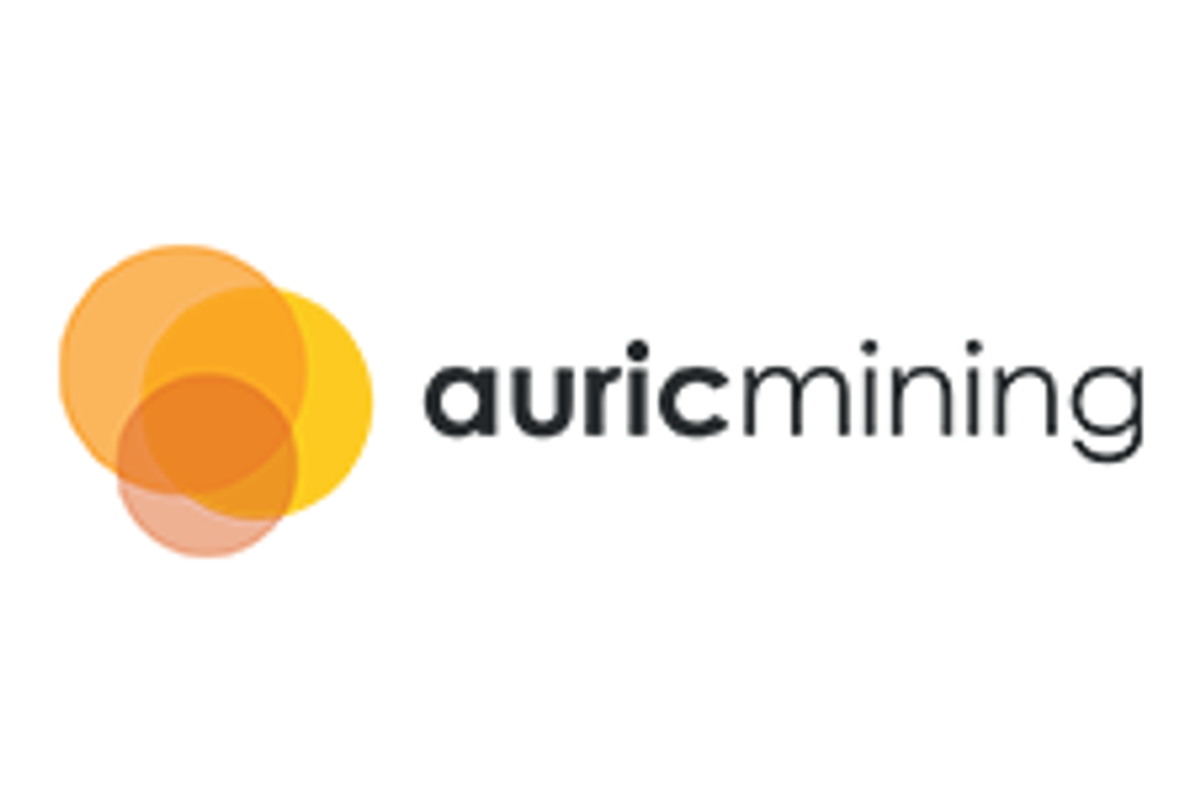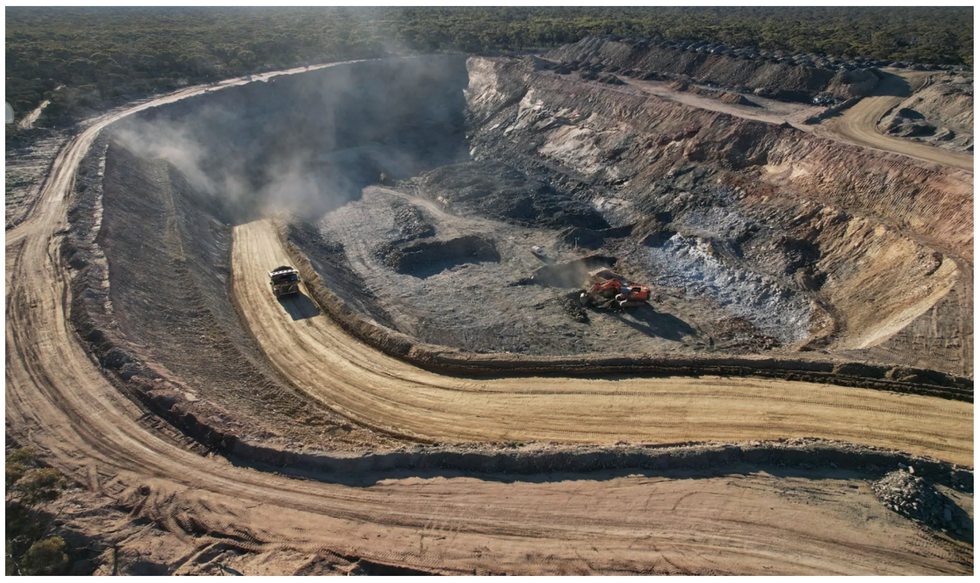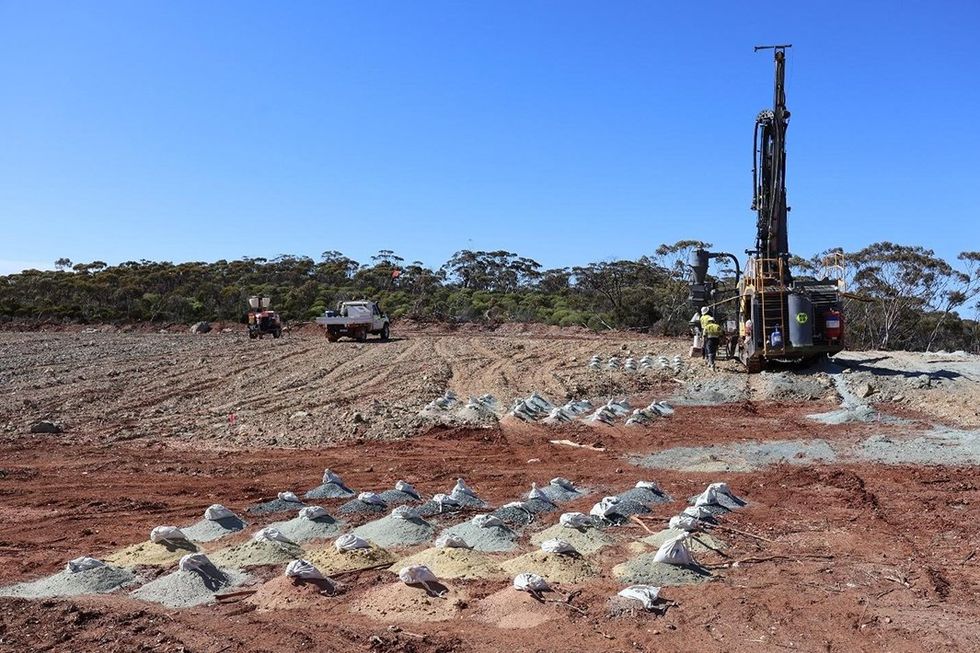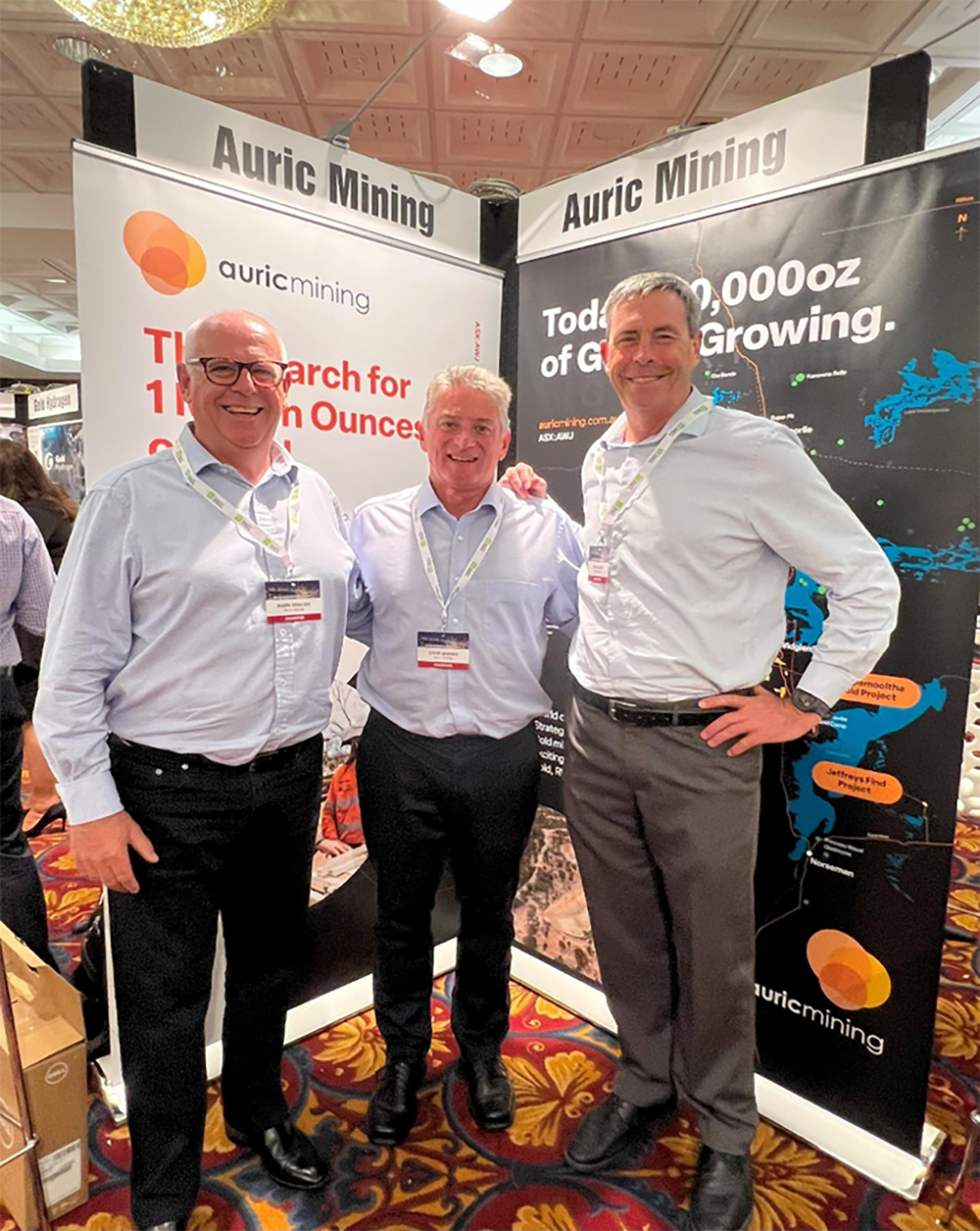
September 10, 2023
Approximately 145,000 tonnes to be processed in one parcel.
Auric Mining Limited (ASX: AWJ) (Auric or the Company) is pleased to announce the second gold milling campaign has commenced at the Greenfields Mill from the first stage pit at the Jeffreys Find Gold Mine near Norseman, WA.
Highlights
- Toll milling has commenced at the Greenfields Mill, Coolgardie. Current campaign to last about seven weeks.
- 52,000 tonnes already delivered to Greenfields Mill ROM Pad.
- Balance of approximately 93,000 tonnes on Jeffreys Find ROM Pad to be hauled to Mill during the campaign.
- First cash to Auric expected October 2023.
Approximately 145,000 tonnes of ore remain to be processed from the first stage pit.
Processing of the gold ore began on Sunday, 10 September. The campaign is expected to last seven weeks with Greenfields continually processing until the parcel is complete.
“This is the money round for Auric Mining,” said Managing Director Mark English,
“It’s the culmination of a three year strategy from time of acquisition to bring Jeffreys Find into production and generate free cash to Auric. As this 145,000-tonne parcel is processed, we can expect sizeable cash payments to Auric in October and November.”
“With a gold price around AUD$3,000 an ounce we have hit a sweet spot in this project. Our timing could not be better, which is great news for Auric,” said Mr English.
The stage one project has been underway for several months with a maiden parcel of 36,000 tonnes already milled at Greenfields. It yielded 1,720 ounces of gold at a head grade of 1.58 grams per tonne.
The project is on target to mine and process approximately 180,000 tonnes of ore from the first stage, expanding to a second stage pit in 2024.
BML are paying all mining costs and expenses. After completing the first phase of mining the partners will subtract all costs, including a cash retention for the second stage pit, before splitting the surplus cash proceeds on a 50:50 basis. This will provide Auric with a substantial cash boost, expected in October and November 2023.
The entire project life is short and final mining is expected to be completed by the end of 2024/early 2025. The project budgeted for a gold price of AUD$2,600/ounce. A higher gold price, currently around AUD$3,000/ounce, has consequently placed the project in a substantially better financial position.
This article includes content from Auric Mining, licensed for the purpose of publishing on Investing News Australia. This article does not constitute financial product advice. It is your responsibility to perform proper due diligence before acting upon any information provided here. Please refer to our full disclaimer here.
AWJ:AU
The Conversation (0)
09 August 2024
Auric Mining
Investor Insight
Given its quick transition from ASX listing to gold production in just three years, and a significant exploration upside at its world-class assets in Western Australia's prolific goldfields, Auric Mining is well-worth a good deal of consideration for sophisticated investors.
Overview
Auric Mining Limited (ASX:AWJ) is a gold exploration and mining company based in Western Australia. In three-and-a-half years since its ASX listing, Auric has become a gold producer in this premier jurisdiction.
Since incorporation, it has moved from zero to 250,000 ounces of gold resources and zero to 282 square kilometers of tenements. Auric Mining is in the company of some of the biggest gold projects in the Goldfields, including the St Ives Gold Mine, Karora Resources’ Higginsville Operations & Beta Hunt Mine, all multi-million-ounce mines.
Besides gold, there are numerous precious metals being mined in the area with world-class deposits of nickel, lithium and rare earths. Auric is gold-focused and has the potential to become a significant producer in the region.

The Jeffreys Find Pit as of 16 July 2024
Partnering with Auric in its Jeffreys Find Project is BML Ventures of Kalgoorlie (BML), a well-known and adept Kalgoorlie contractor. BML is a specialist mining contractor. It has particular expertise in shallow, open-pit mining with short duration projects in The Goldfields.
The Jeffreys Find Project commenced in May 2023 and is due for completion in the first quarter of 2025. The joint venture is partially exploiting 47,000 ounces of gold resources.

Gold ore on the ROM Pad at Jeffreys Find, Norseman. Ore was hauled to Coolgardie for milling in 2023.
Stage One is now complete and Auric has commenced its second gold milling campaign for 2024 of 150,000 dry metric tonnes from the Jeffreys Find gold mine on 24 July 2024.
Success for Auric at Jeffreys Find means the company is self-funding for 2024 and able to sustain its exploration and development activity without need for additional capital raising. Auric now has a road map for five years of continuous mining and profits.

Grade control drilling at Munda was completed in January 2024
Auric’s primary focus continues to be on the company’s flagship asset - The Munda Gold Project.
To date almost 200,000 ounces of gold resources have been identified at Munda, the asset being part of the wider Widgiemooltha Gold Project, encompassing 22 tenements.
Munda is one of the largest deposits in the Widgiemooltha area having the potential to become a significant gold project.
In mid-year 2023 the company released to the ASX a third-party scoping study on the economics and potential of open-pit mining at Munda.
The scoping study estimates the mining of up to 120,000 ounces of gold over a three-year mine life. It is envisaged gold ore would be toll-processed at a nearby Coolgardie Mill. The study projects free cash profits of between $50 million and $100 million, based on various gold prices.
Production from Munda could commence in the fourth quarter of 2024.
Auric also announced the execution of a binding term sheet for the partial purchase of Win Metals' nickel and lithium rights within the Munda gold project area including seven tenements or applications. Auric further plans to mine a trial pit at Munda Gold potentially in Q1 2025.
Auric is also planning to progress its Spargoville Project, where it has tenements ideally positioned along strike from the Wattle Dam gold mine, a prolific mine which produced 268,000 ounces of gold at 10 g/t, between 2006 and 2013.
An experienced and savvy management team leads Auric Mining towards its vision of becoming a significant gold producer in Western Australia. With the three directors owning approximately 17 percent of the company, they are focused and motivated for success.

Auric Mining’s board of directors: Mark English, Managing Director; Steve Morris, Chair; and John Utley, Technical Director
Steve Morris, non-executive chairman, has more than 25 years of experience in financial and natural resources markets.
Mark English, managing director, has a 40-year career as a chartered accountant and is at ease with all facets of running a public company on the ASX including major equity and debt raisings.
John Utley, technical director, has 35 years of experience in gold exploration and development.
This range of expertise offers a high level of confidence that the company will achieve its goals.
Company Highlights
- Auric Mining is a publicly listed company with a market cap of around $13m.
- Its flagship asset is the 200,000-ounce Munda Gold Project at Widgiemooltha, just 100 kms from Kalgoorlie. It has an aim to begin production in 2024 before more intensive mining from 2025 onwards.
- During 2023 the focus was on mining at its Jeffreys Find Gold Mine, near Norseman. Stage One mining between May and November 2023 produced 9,741 ounces of gold, creating almost $30 million in gross revenue.
- A final reconciliation saw surplus cash of $9.5 million generated. Auric banked $4.78 million, being 50% of the surplus cash as agreed with its JV partner, BML Ventures of Kalgoorlie.
- Auric has commenced the second gold milling campaign for 2024 of 150,000 dry metric tonnes from the Jeffreys Find gold mine.
- The company executed a binding term for the partial purchase of Win Metals' nickel and lithium rights within the Munda Gold Project area further improving the pathway to mining a trial pit at Munda gold project, potentially in Q1 2025.
- As an explorer, Auric has accumulated 282 square kilometers of tenure as it looks to find and mine a million ounces of gold between Kalgoorlie and Norseman.
- The area hosts some of the richest mineral deposits and mines in the world. In addition to gold, Auric also has opportunities for discovery of lithium, rare earths and nickel.
- Auric has three main projects: The Munda Gold Project which is part of the Widgiemooltha Gold Project; Jeffreys Find Gold Mine; The Spargoville Project.
- The company has a board and leadership team with a track record of delivering success for shareholders, particularly in discovering and bringing to production gold projects.
Get access to more exclusive Gold Investing Stock profiles here
Keep reading...Show less
Western Australian gold producer, explorer and developer with world-class deposits
Latest News
Latest Press Releases
Related News
TOP STOCKS
American Battery4.030.24
Aion Therapeutic0.10-0.01
Cybin Corp2.140.00
